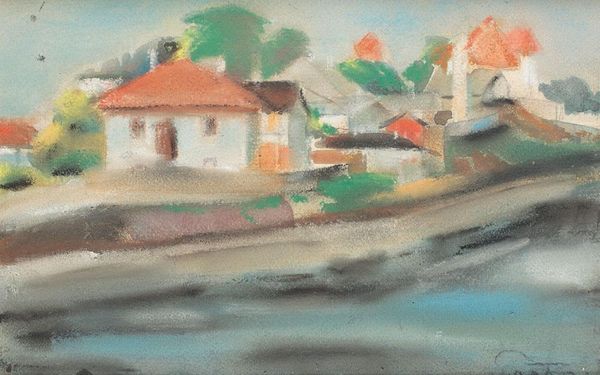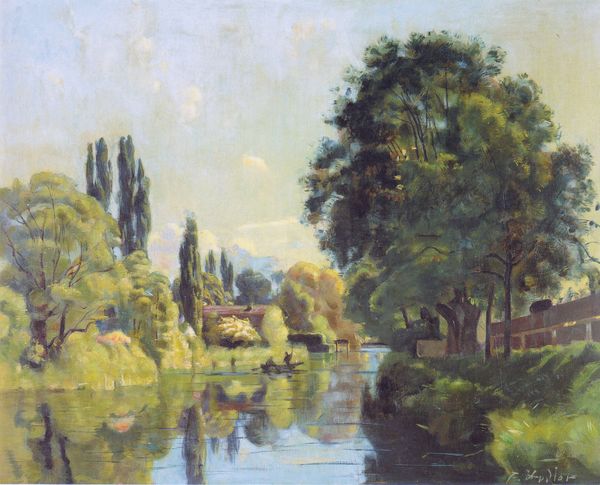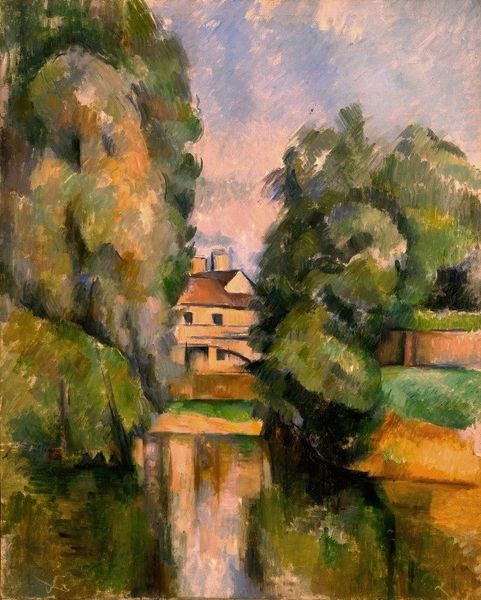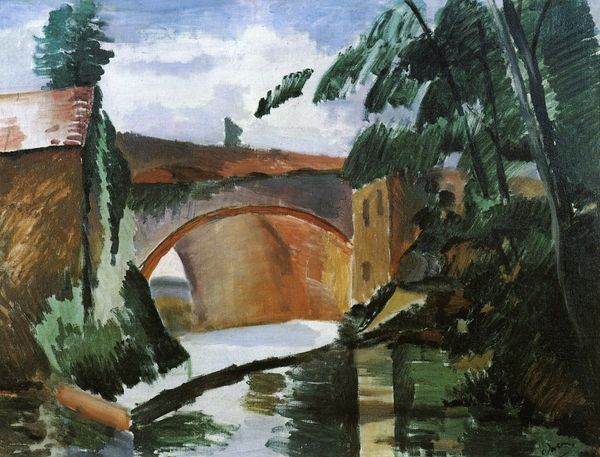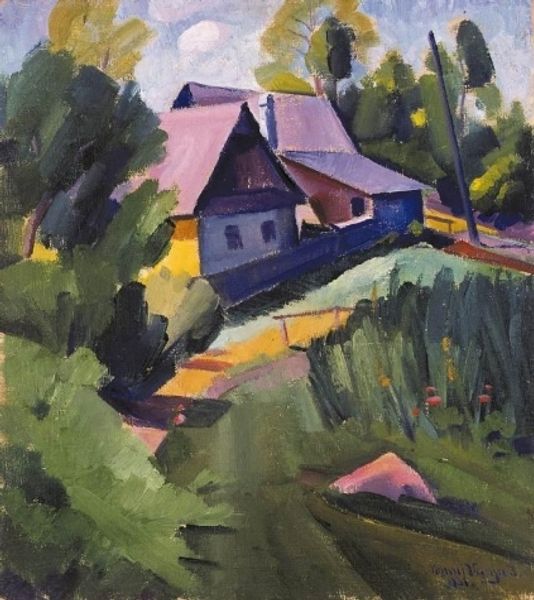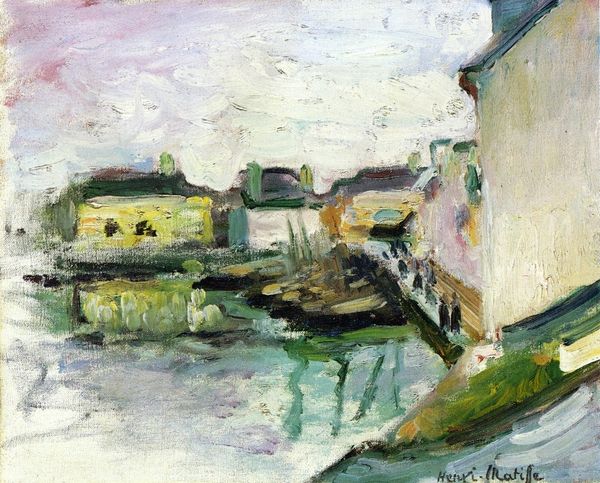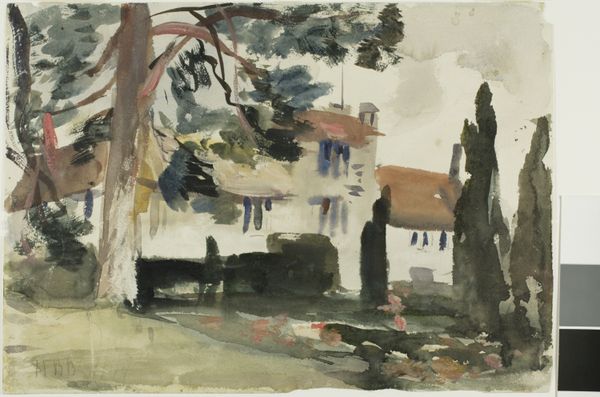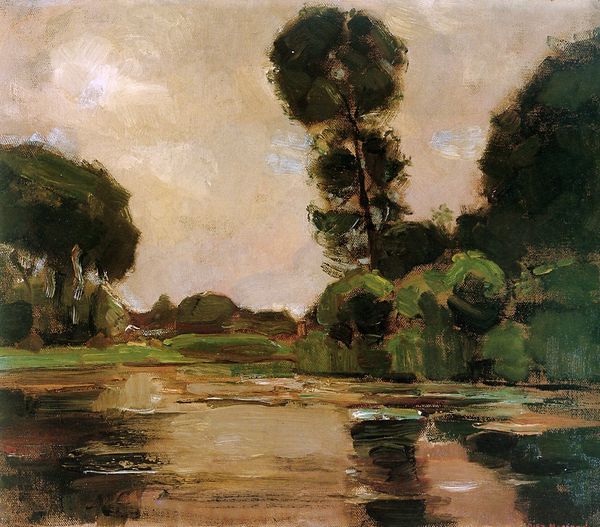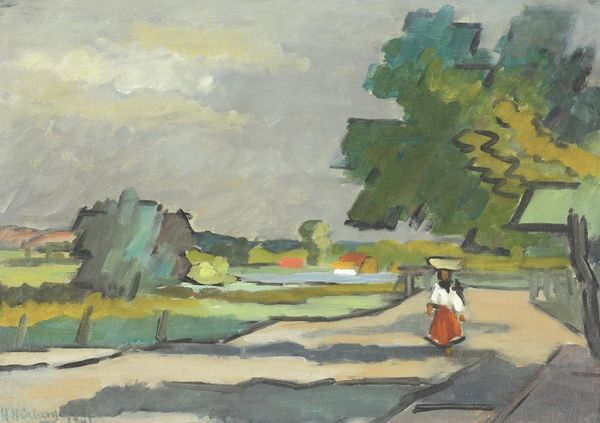
oil-paint
#
fauvism
#
oil-paint
#
landscape
#
oil painting
Dimensions: overall: 60 x 73 cm (23 5/8 x 28 3/4 in.) framed: 78.1 x 90.8 x 8.8 cm (30 3/4 x 35 3/4 x 3 7/16 in.)
Copyright: National Gallery of Art: CC0 1.0
Curator: This is "The River," an oil painting by Maurice de Vlaminck, dating back to around 1910. Editor: My first impression is the dynamic, almost violent brushstrokes. There's a vibrant energy radiating from the canvas, a raw vitality. Curator: Indeed. Vlaminck was a key figure in the Fauvist movement, which emphasized bold, non-naturalistic color. Observe how the colors themselves create form, the intense blues against the vivid greens. It's less about accurate representation and more about evoking emotion. Editor: It seems that way! The river, the center and main subject, has appeared across centuries of painting as an allegory for life: a symbol of continuous, yet unstopping, forward movement, like a thread that sews together life and nature in all its aspects. Here, Vlaminick’s river surges toward an unseen destination, framed between massive green figures. Curator: Symbolism aside, consider how the composition works. Vlaminck employs a somewhat simplified structure, focusing our vision. There’s a juxtaposition of light and shadow to the point of exaggeration, heightening the chromatic contrast and imbuing the painting with depth and structure. Editor: Look at those buildings reflected in the water. The upside-down duplication reminds us how reflections traditionally appear in art. It is a mirror world where subconscious emotions can come to the fore, not as distorted memories but clear archetypes. Curator: Certainly. However, Vlaminck manipulates the medium in a way that defies strict adherence to reality, creating a surface teeming with restless brushwork. Editor: Perhaps it mirrors how our own memories never quite recapture objective reality. It may represent what the river holds and its effect upon the artist. An invitation, through paint, to explore life with the Fauvist’s intense chromatic register, embracing all that lies hidden beneath the surface. Curator: It provides a compelling testament to Fauvism's capacity to convey emotion through form and color alone, unburdened by traditional constraints. Editor: And reveals, doesn't it, how natural forms have a long history in reflecting shared feelings and experiences.
Comments
No comments
Be the first to comment and join the conversation on the ultimate creative platform.
